Learning new tricks from sea sponges, nature's most unlikely civil engineers
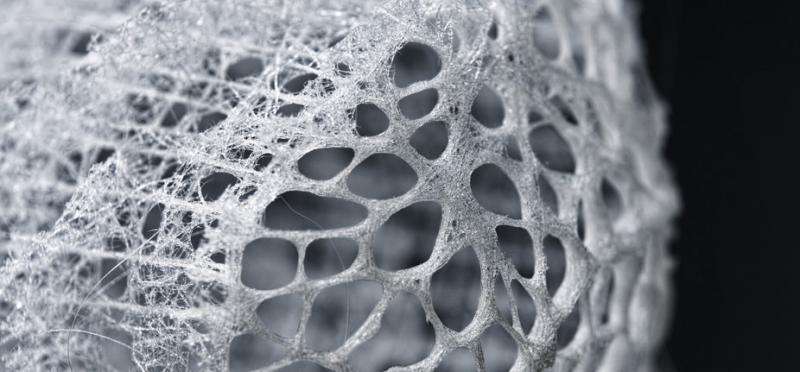
Imagine a future in which buildings tower miles over the streets below, tourists take day trips to the edge of our atmosphere, and multiple space stations can be spotted drifting across the night sky. To make this sci-fi vision a reality, we will need to create new kinds of structures that are lightweight but still strong and tough.
A traditional approach to this design process would involve creating new materials, like – metals that are exceptionally strong and resistant to extreme temperatures. These advanced materials have enabled us to and send .
However, we can't simply "invent" new chemical elements, and there are only a finite number of ways to those that we already have. We therefore need to learn new ways to arrange currently available materials so that the resulting structures are stronger and tougher than the materials themselves.
Thankfully, nature has wrestled with this same problem for hundreds of millions of years. Unlike engineers, however, nature doesn't come up with new arrangements, or "mechanical designs," using equations and computer algorithms. Rather, it produces many different designs through evolutionary mechanisms, like genetic mutation. Then, through natural selection, organisms with better designs often outlive those with worse ones and hand off the blueprints of those designs to their offspring through genetic inheritance.
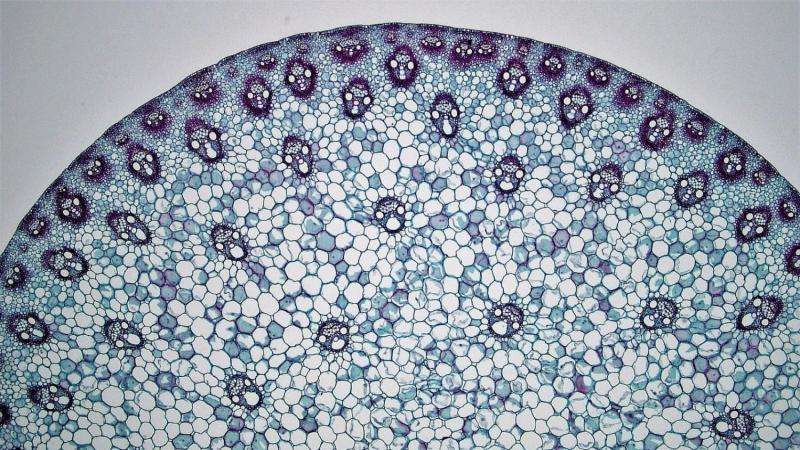
This evolutionary process can produce extremely efficient mechanical designs that often look nothing like those used in the engineered world. For example, I am studying sponges that live at the bottom of the ocean to learn new ways to make stronger – the structures that hold up everything from our homes to the frames of our cars and the bridges we drive over.
The science behind bio-inspired engineering
Bio-inspired engineering has become a in the science world. The goal is first to understand how a biological structure's mechanical design enhances its performance, and then to apply the physics principles underlying that design to create new human-made structures.
For example, the hard shells of clams and oysters are made up of , a brittle mineral that is the main ingredient in limestone. Clam shells are because this mineral is not randomly packed together, but rather is arranged in a pattern that looks like a microscopic brick wall. The interfaces between the bricks in this wall through the shell.
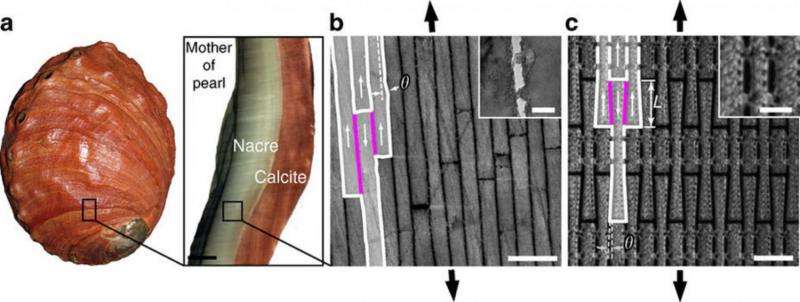
Simply copying and pasting this design to create a new human-made structure would not necessarily give us a structure with the same toughness as the shell. Rather, bio-inspired engineering is a multi-step process.
First, we identify the function of a natural structure. For example, the shell protects the clam from predators. Next, we quantify how that structure's design affects its performance of that function – in this case, how strong and tough the clam shell is compared to aragonite itself. Finally, we want to explain the relationship between design and performance. For the clam shell, this would mean deriving an equation that relates parameters like the of the microscopic "bricks" in it to the shell's toughness.
What makes sponges so strong?
Unlike a soft, squishy kitchen sponge, the marine sponge that I study, Euplectella aspergillum, is stiff and strong. It has an amazingly complex skeleton that consists of an intricate assembly of fibers, known as spicules, no larger than a human hair. Their structural function is much like that of the thousands of beams that make up the Eiffel Tower.
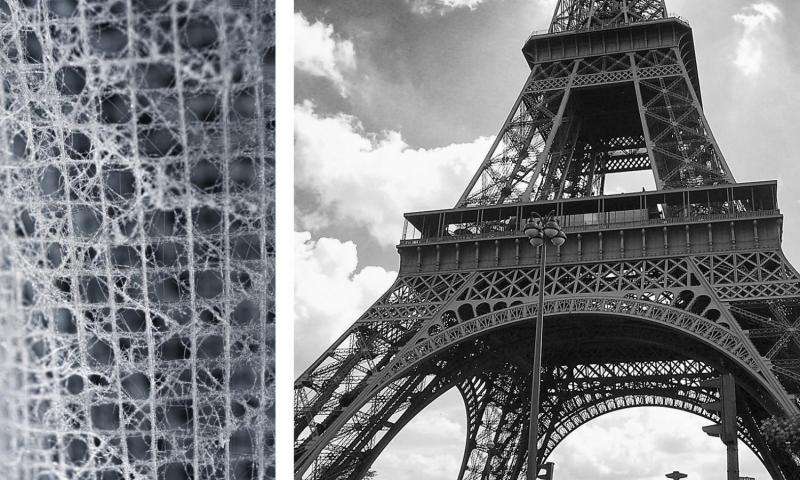
The sponge's spicules are unusual because they're made almost entirely out of glass! While we typically think of glass as a weak and brittle material, the spicules are incredibly strong and resilient. This contrast is what originally motivated me to consider what makes the spicules so strong – and how they can teach us to make stronger beams.
Layers lead to strength
My research focuses on a specialized group of spicules that act like roots to anchor the sponge to the soft sediment of the ocean floor. Remaining securely fastened to the ocean floor allows the sponge to pump water through its body and filter out microorganisms to eat.
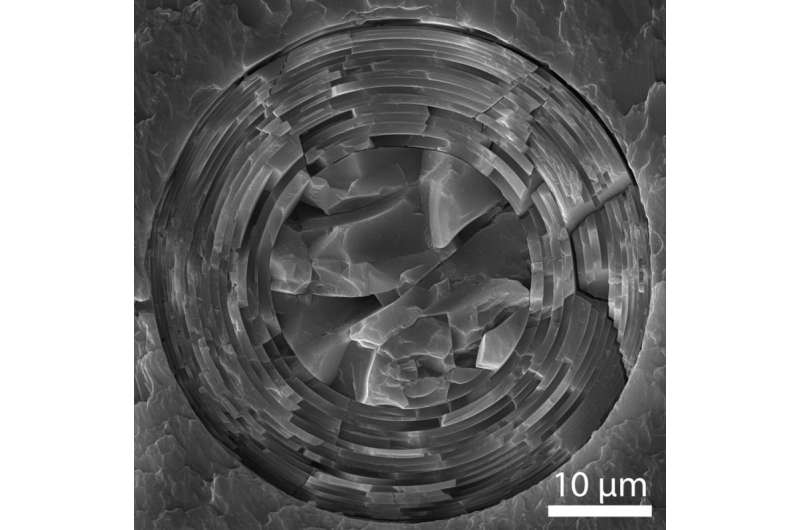
Like the clam's shell, the anchor spicules also have a microscopic mechanical design. If you cut one open, you'll find that the spicule's glass is arranged in concentric layers that look a lot like tree rings. It's possible that this mechanical design allows the anchor spicules to bend more before breaking, and therefore makes the sponge's attachment more robust.
I've explored this idea by measuring how much the anchor spicules can bend before breaking, and comparing them to spicules from another sponge that have the same chemical composition but do not have any layers. The show that E. aspergillum spicules can bend roughly 2.4 times more than the spicules without layers.
Unlocking the secret to stronger structures
The next step in my research is to understand why simply arranging the glass in concentric layers has such a large effect on bending strength. The plan is to derive equations that can predict the strength of a beam with a certain number of concentric layers and layer thicknesses – the third step of the bio-inspired engineering process. If my equations are correct, they should be able to accurately predict the strength enhancement that I measured.
A few years ago I was part of a team that developed a to make this kind of prediction. However, the equations that make up this model predict that the layers should increase the spicule's bending strength by only a maximum of 33 percent – a far cry from the 140 percent increase that I recently measured in the actual spicules. This difference suggests that there is something missing in our model, and that we need to go back and revise these equations.
Once we have an accurate model, we could use the equations to design spicule-like, layered beams that are much stronger than today's state-of-the-art structures. These layered beams could ultimately be used to make rockets, airplanes, and space habitats that are substantially lighter, and therefore more efficient, than the ones we use today. In a way, design secrets from the bottom of the ocean could eventually help us explore new worlds.
Provided by The Conversation
This article was originally published on . Read the .![]()




















